Kyrgyzstan Travel Guide
Destination is great for hiking and mountain trekking, horse riding and bird-watching, discovering a truly Nomadic lifestyle of the Central Asia.
The most green ‘Stan have stunning mountains and a nomadic horse-riding culture, that its main assets; in late spring the hills are alive with wild flowers, and the (semi) nomads emerge from apartment blocks to head for their summer pastures. If you fancy drinking fermented mare’s milk and sleeping in a yurt, this is the place for you.
Add to this a well-developed network of homestays and visa-free travel, and it’s easy to see why Kyrgyzstan is the gateway of choice for many travelers in Central Asia.
Fast navigation
Destination Highlights
Bishkek
Bishkek is a capital of Kyrgyzstan and main hub for arriving and departure to/from the country.
The city of wide boulevards and marble-faced public buildings, surrounding interior courtyards. Mostly outside the city center, there are also thousands of smaller privately built houses. It is laid out on a grid pattern, with most streets flanked on both sides by narrow irrigation channels that water the innumerable trees that provide shade in the hot summers.
National History Museum
The National History Museum is the main museum in Bishkek. It used to be called the Lenin Museum during the Soviet era. The museum now has a collection that tells the history of how Kyrgyzstan became an independent state. There are also exhibits dedicated to Lenin and Askar Akayev, Kyrgzystan's former president. The museum also highlights the folk traditions of Kyrgyz and its pre-Soviet history, excavation finds and fascinating ethnographical collections.
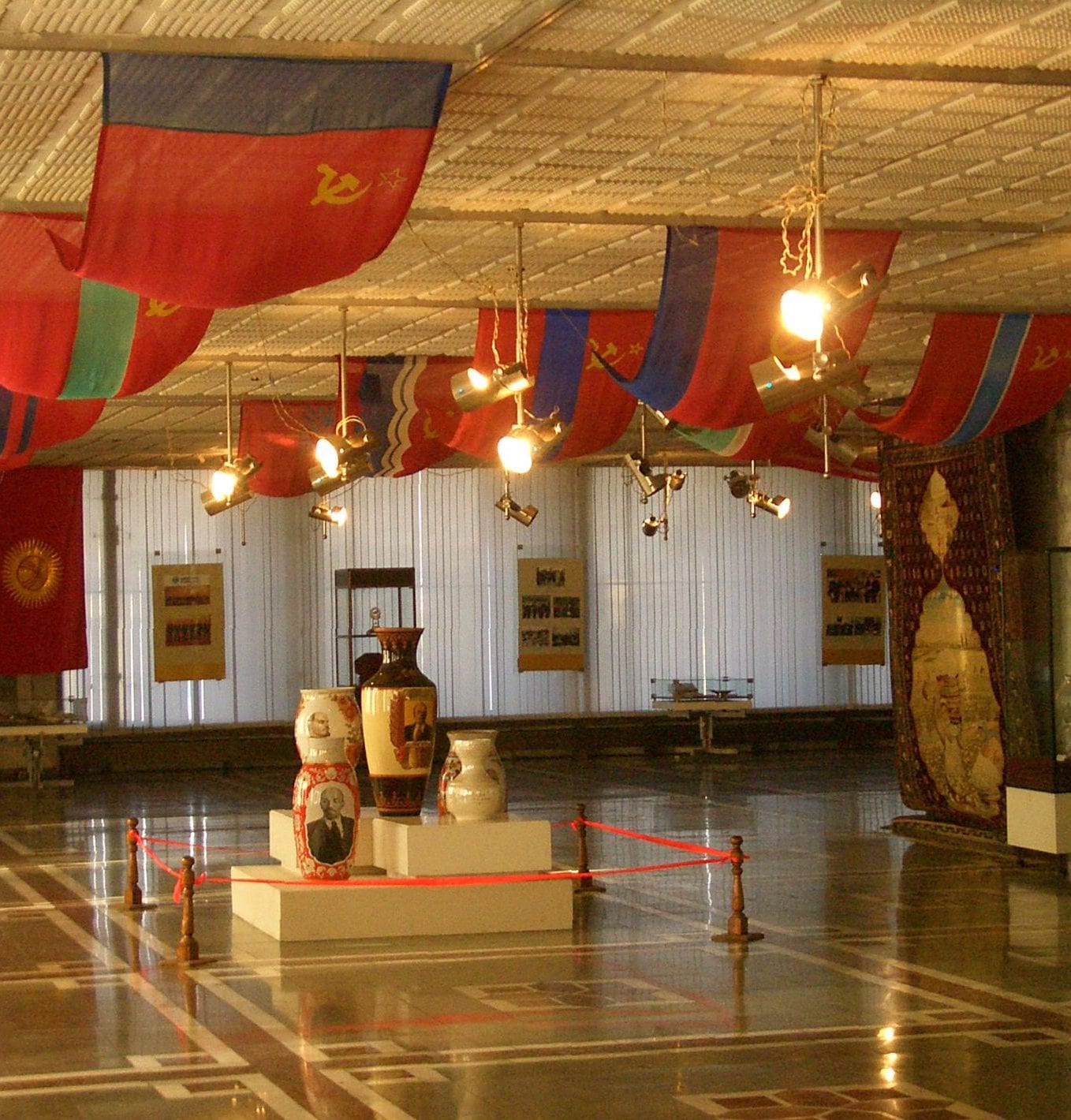
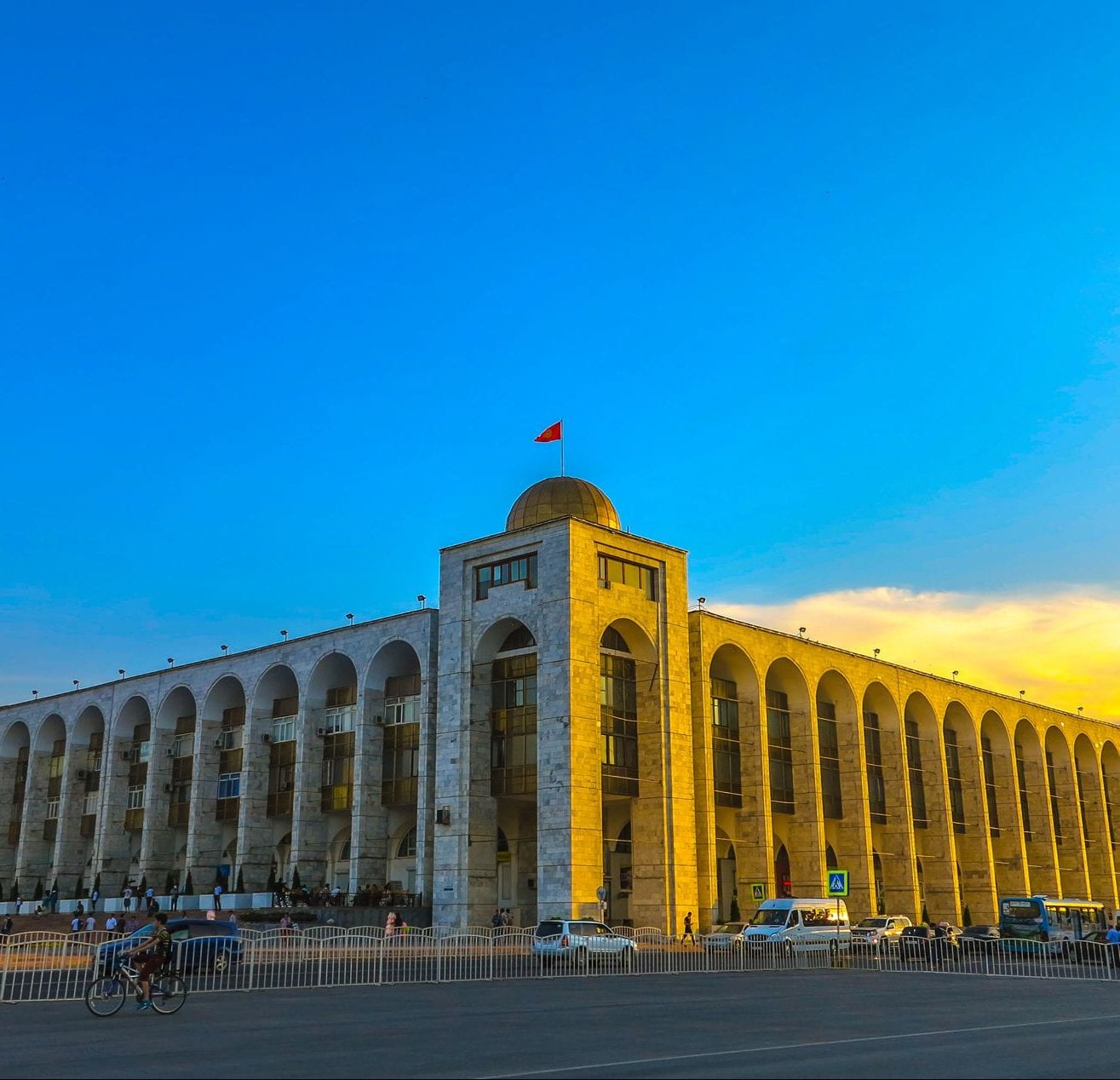
Ala-Too Square
Surveyed by a triumphant statue of Mighty Manas, Bishkek’s nominal center (or White City, as it called by locals), is architecturally neobrutalist in style but has a very photogenic quality – especially when slowly goosestepping soldiers change the guard beside the soaring national flagpole. In summer, the concrete of the square’s northern half is relieved by attractive floral displays and fountains that double as swimming pools for local children.
Oak Park
This pleasant green central park is great place to have a slow walk during hot summer days in Bishkek. It have a small open-air sculpture garden amid the oaks behind the statue of Kurmanjan Datka. The park has officially been renamed for local author Chingiz Aitmatov, but nobody seems to refer to it as anything other than Oak Park.

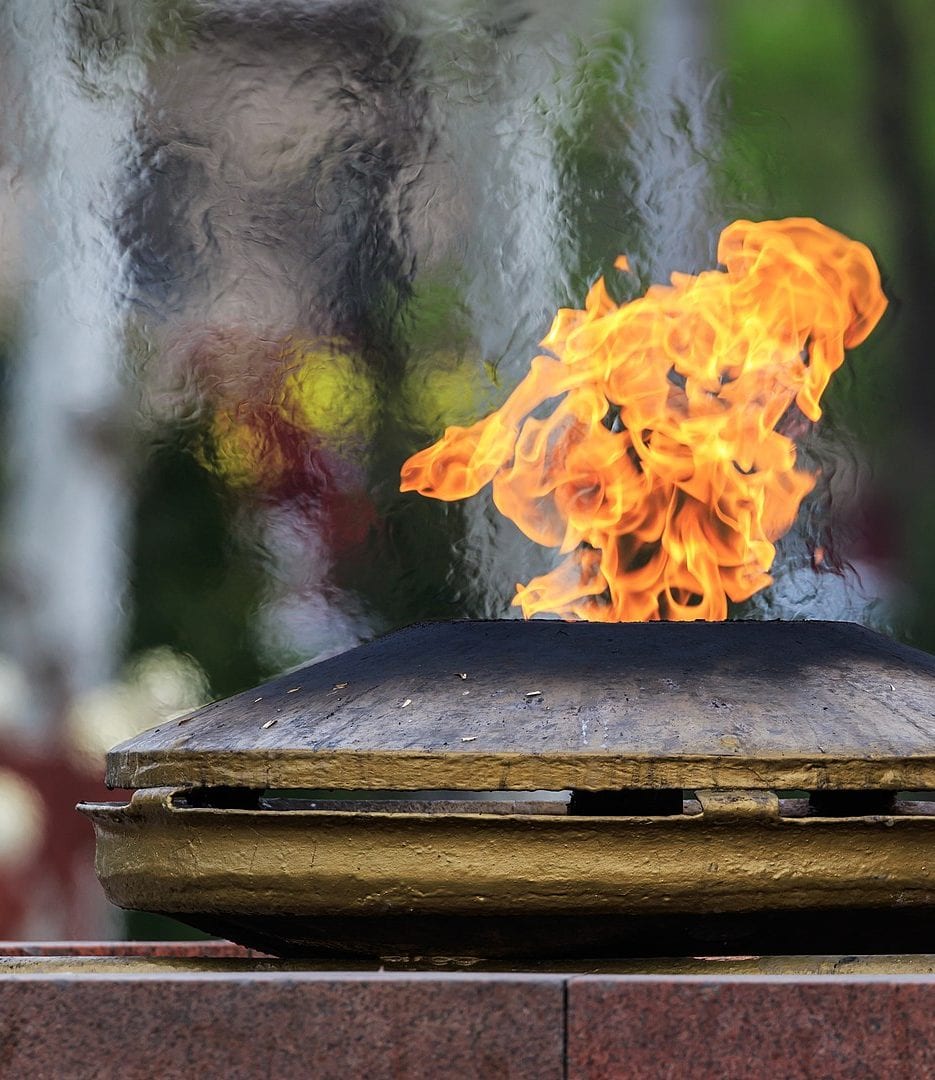
Victory Square
Commemorating the 40th anniversary of the end of WWII, this monument is designed to evoke three symbolic yurt struts curving above an eternal flame. It sits within the dauntingly oversized sun-bleached expanse of Victory Square.
Osh Bazaar
Bishkek’s most central bazaar has a certain compulsive interest and is an important city landmark. Here one could find a huge variety of different goods, from local sweets and snaks till traditional Kyrgyz clothes, including white imitation-felt ak kalpak hats and colorful shepherds’ chests. If you into the vivid local lifestyle or finding fun to bargain the prices with local sellers, this place is wait for you. One kindly advice before visit the local bazaar: always keep your eye on your money and personal stuff.
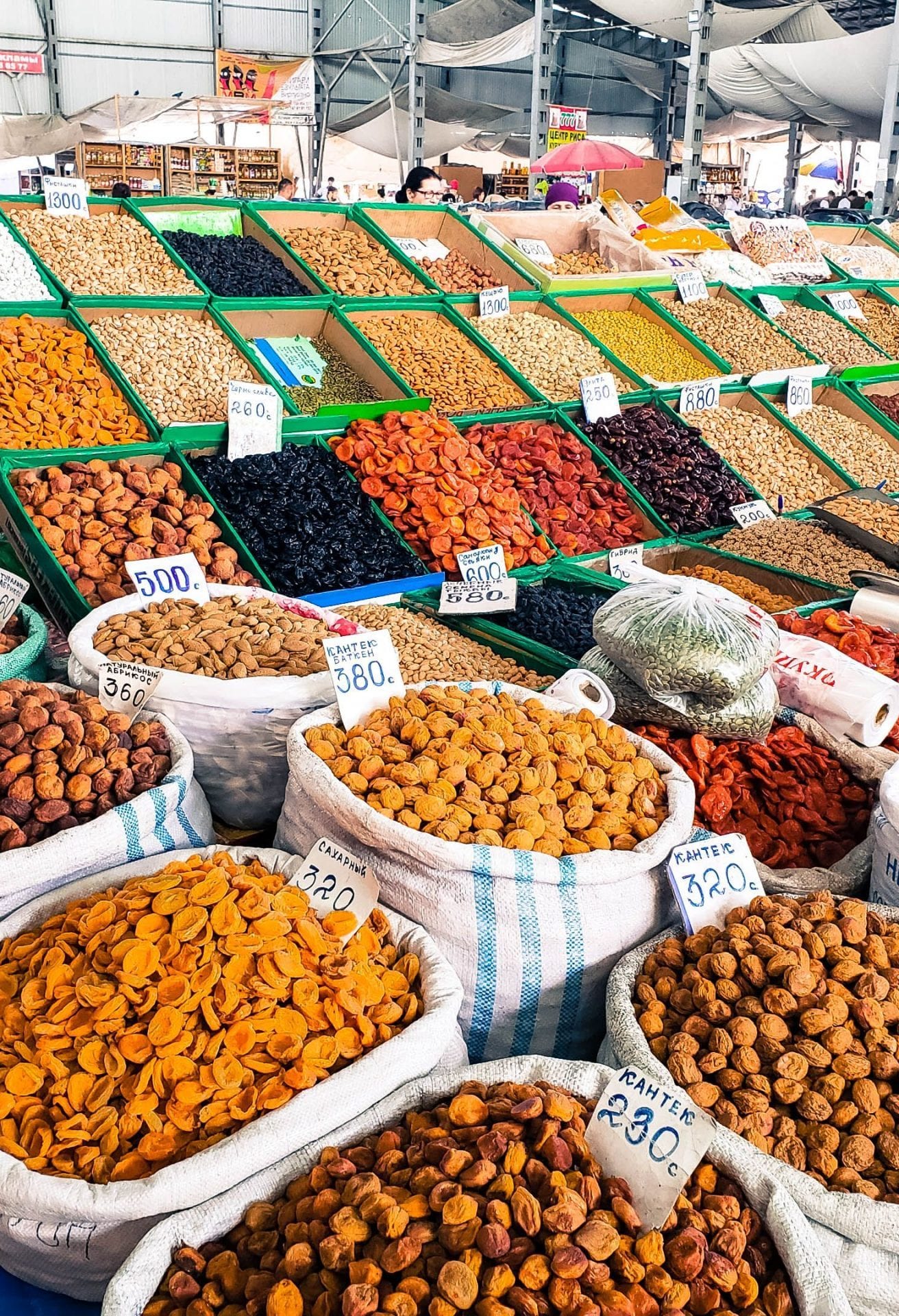
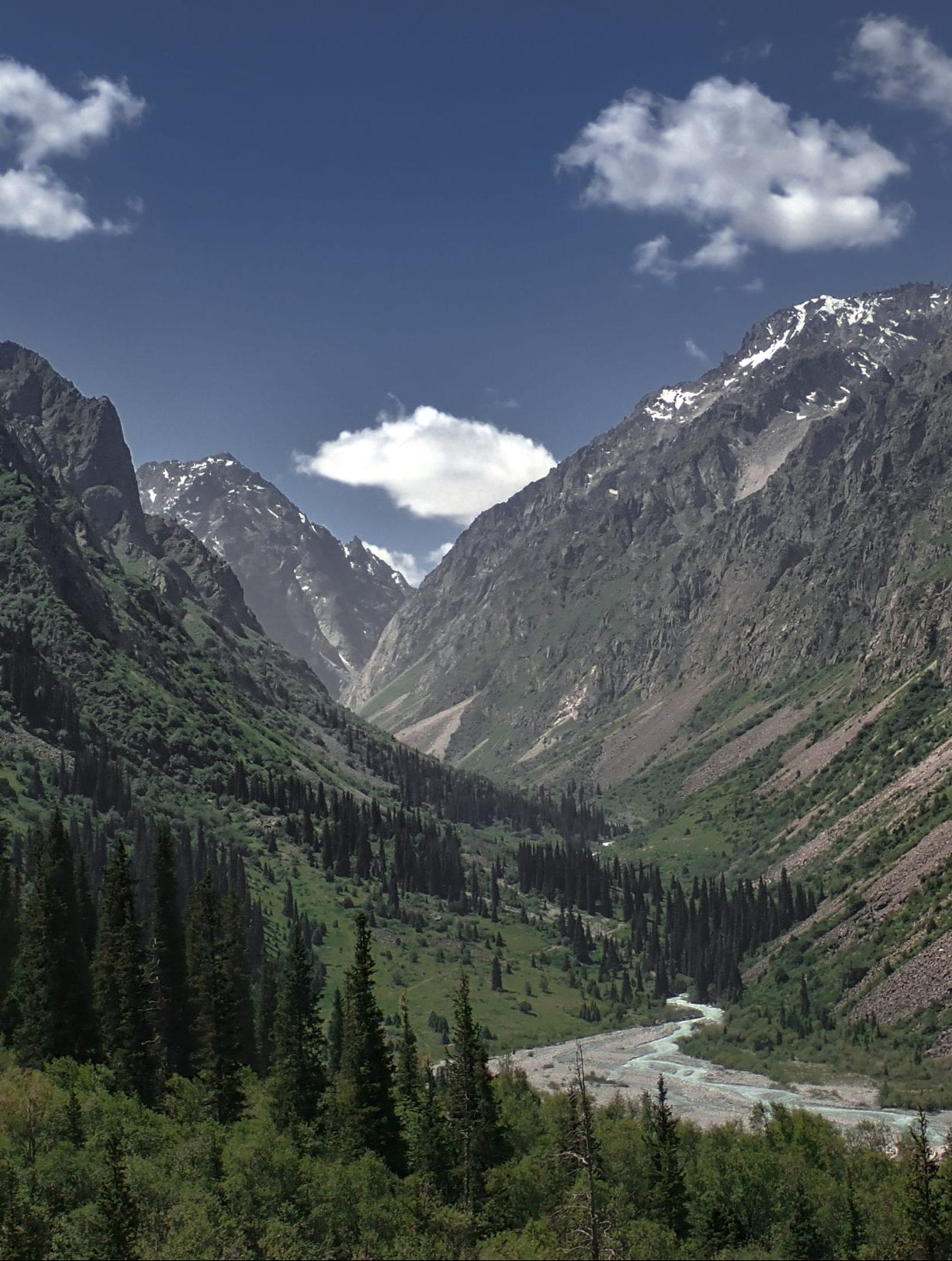
Ala Archa National Park
In this grand, accessible Y-shaped valley south of Bishkek, you can sit by a waterfall, hike to a glacier or mountaineer up the region’s highest peaks. The park covers about 200 square kilometers, and its altitude ranges from about 1,500 meters at the entrance to a maximum of 4,895 meters at Semenov-Tian-Shansky Peak, the highest peak in the Kyrgyz Ala-Too Range of the Tian Shan. There are more than 20 small and large glaciers and some 50 mountain peaks within the park.
Nothern Shore of Issyk-Kul
Midsummer weekends on Lake Issyk-Kul’s Northern Shore see the main road transformed into a veritable tourist conveyor belt, but out of season it remains a quiet, mostly charming drive with mountain scapes rising directly to the north and like apparitions across the lake away to the south. The main tourist centre is Cholpan-Ata and Bosteri, but laid-back Tamchy is a quieter alternative for those not interested in the party scene. Well over a hundred hotel complexes are dotted along the northern coast of Issyk-Kul, but that doesn’t mean the whole area is one long resort.
Ak Beshim Ruins
Located in Tokmak and neighbouring the Burana Tower, Ak-Beshim are the ruins of the ancient town. The mounds and ridges at Ak-Beshim delineate a large town (35 hectares) which has yielded remains of a Nestorian church and a Buddhist temple from the 7th and 8th centuries. Ak-Beshim is reckoned to have been the most important town in its time. The site has since been reliably identified as Suyab. Mentioned in medieval literary sources as a thriving and powerful city, Suyab was the capital of the Western Turkic Khanate (6th century AD) and of the later Qarluq Turks (8th century AD). The city also flourished under the Arabs from the 10th to 12th centuries.
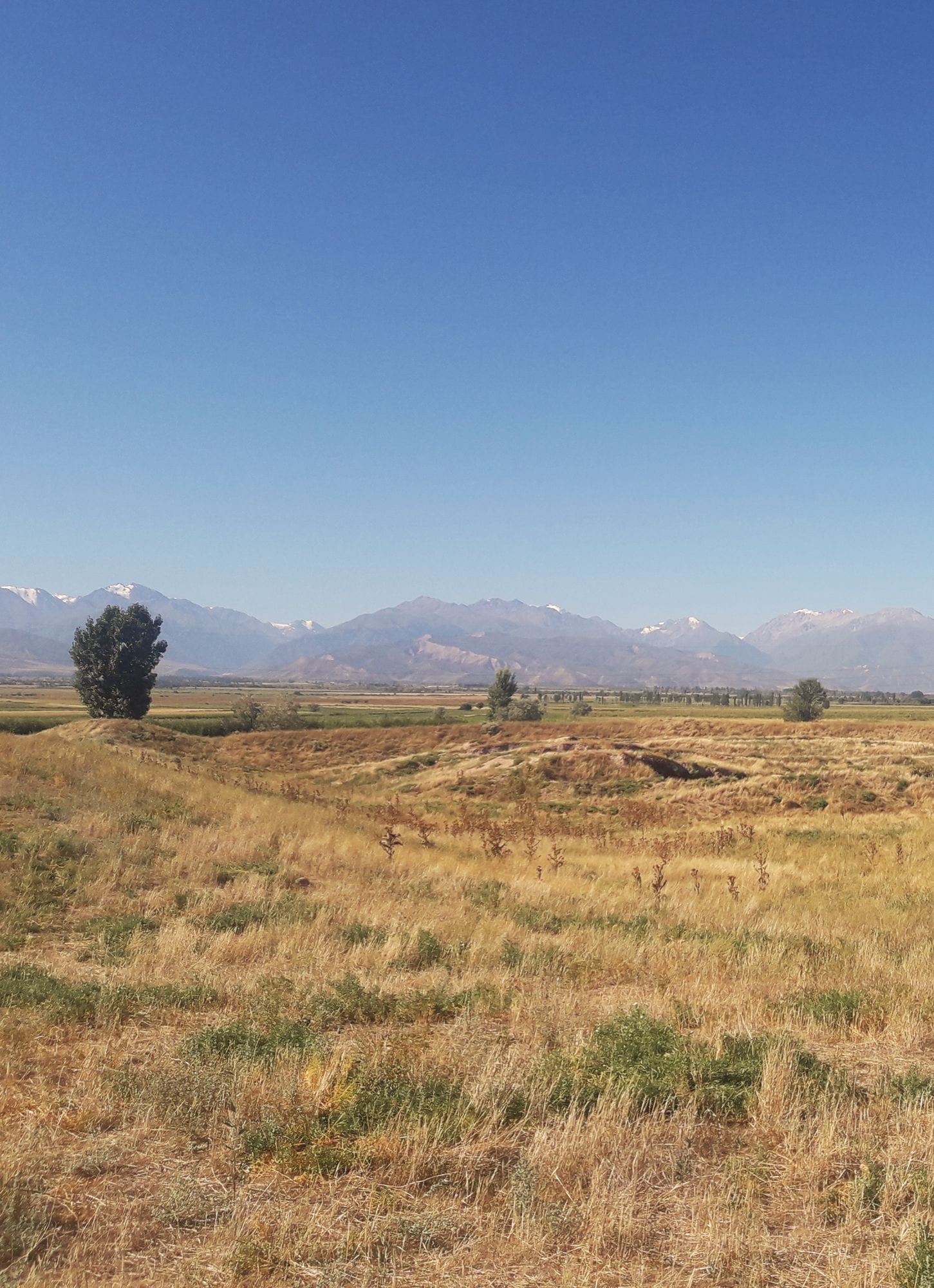
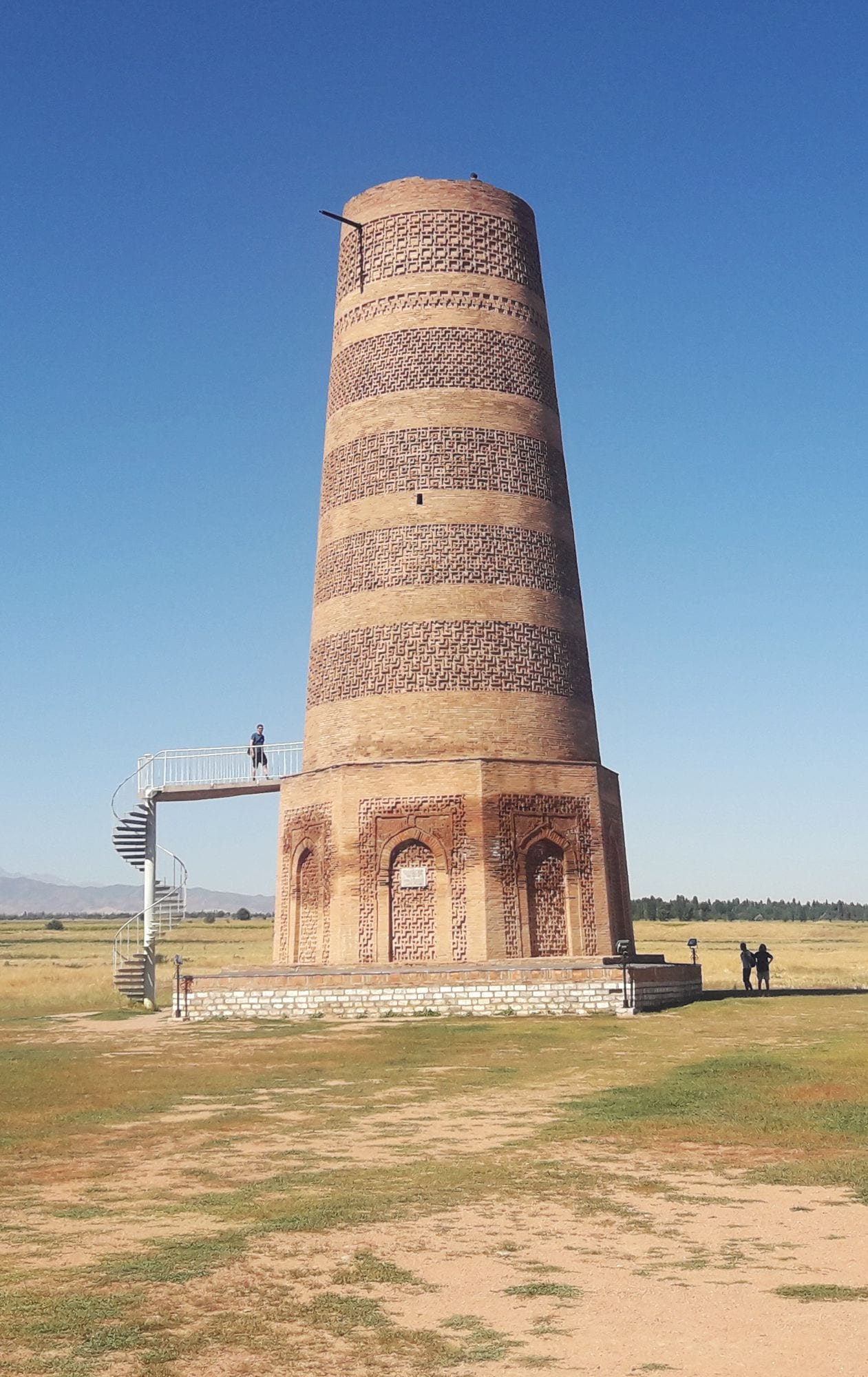
Burana Tower
In the fields south of Tokmok, the Burana Tower is the 24m-high stump of a huge brick minaret, supposedly 11th-century though what you see dates predominantly from a 1950s Soviet restoration. This is all that’s left of the ancient citadel of Balasagun, founded by the Sogdians and later a capital of the Karakhanids, excavated in the 1970s by Russian archaeologists.
Cholpon Ata
In midsummer Cholpon-Ata awakens from its long off-season slumber to become the epicentre of an improbable northern Issyk-Kul beach scene: by day there are tanning bods, zipping jet skis and ice-cream-licking tots; by night it’s open-air cafes, thumping discos and young lovers breaking social mores. But for most Westerners the beach scene is of minor interest and travelers generally stop here to glimpse the petroglyphs and organize short-notice horse treks.
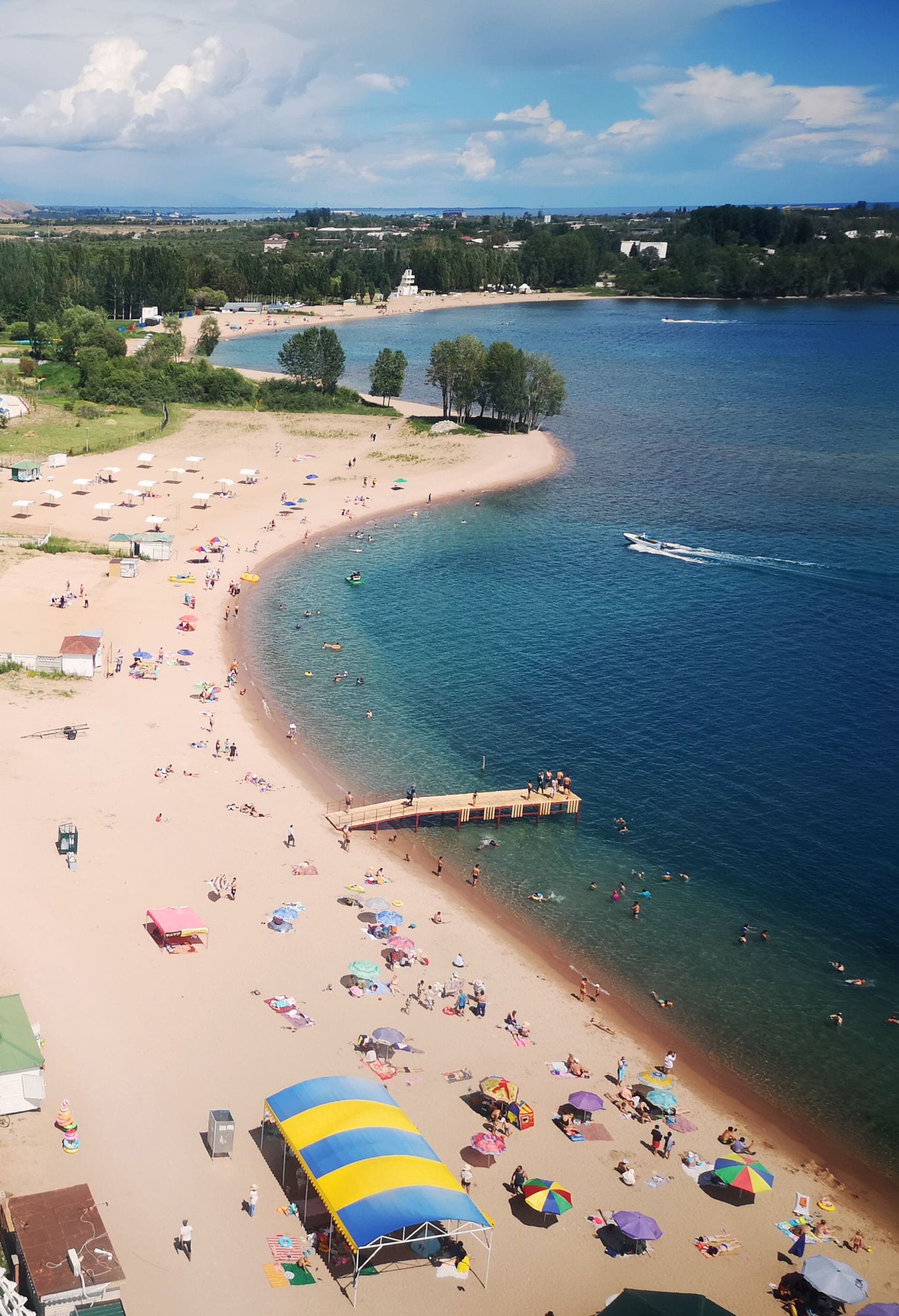
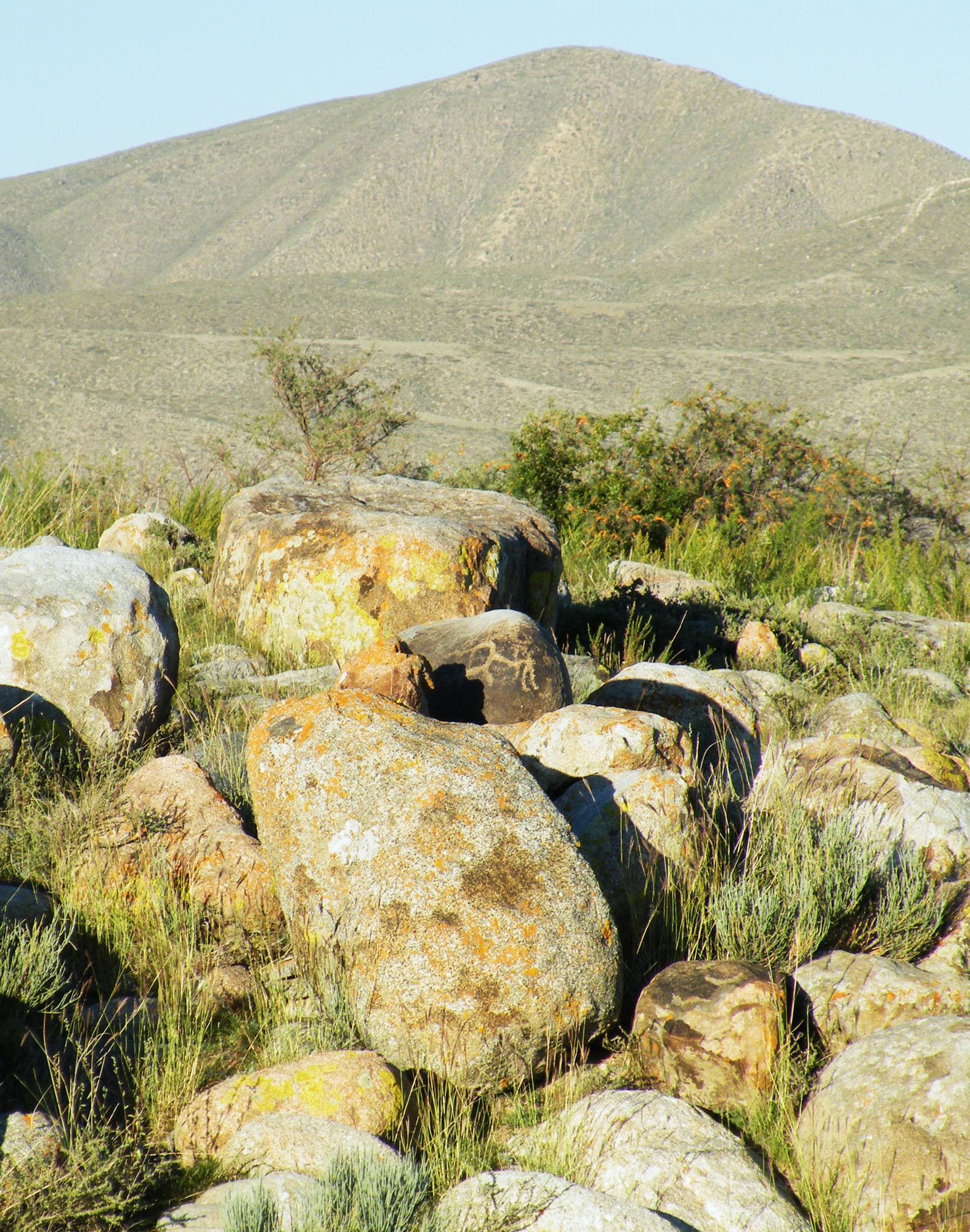
Petroglyphs Site
North of the Cholpon Ata center is an extensive field of glacial boulders, many with pictures scratched or picked into their surfaces. Some of these petroglyphs date from the Bronze Age (about 1500 BC), but most are Saka-Usun (8th century BC to 1st century AD), credating the arrival of Kyrgyz in the area. Saka priests used this sacred site for sacrifices and other rites to the sun god and they lived in the settlements that are currently underwater in the Cholpon-Ata bay.
Rukh Ordo Cultural Center
In a large and somewhat surreal beachfront complex, the curious museum-park Rukh Ordo depicts Kyrgyz legends, historical characters, and the interplay of five religions. The setting is quite attractive, though without a guide visitors may be a bit lost as to the significance of it all.
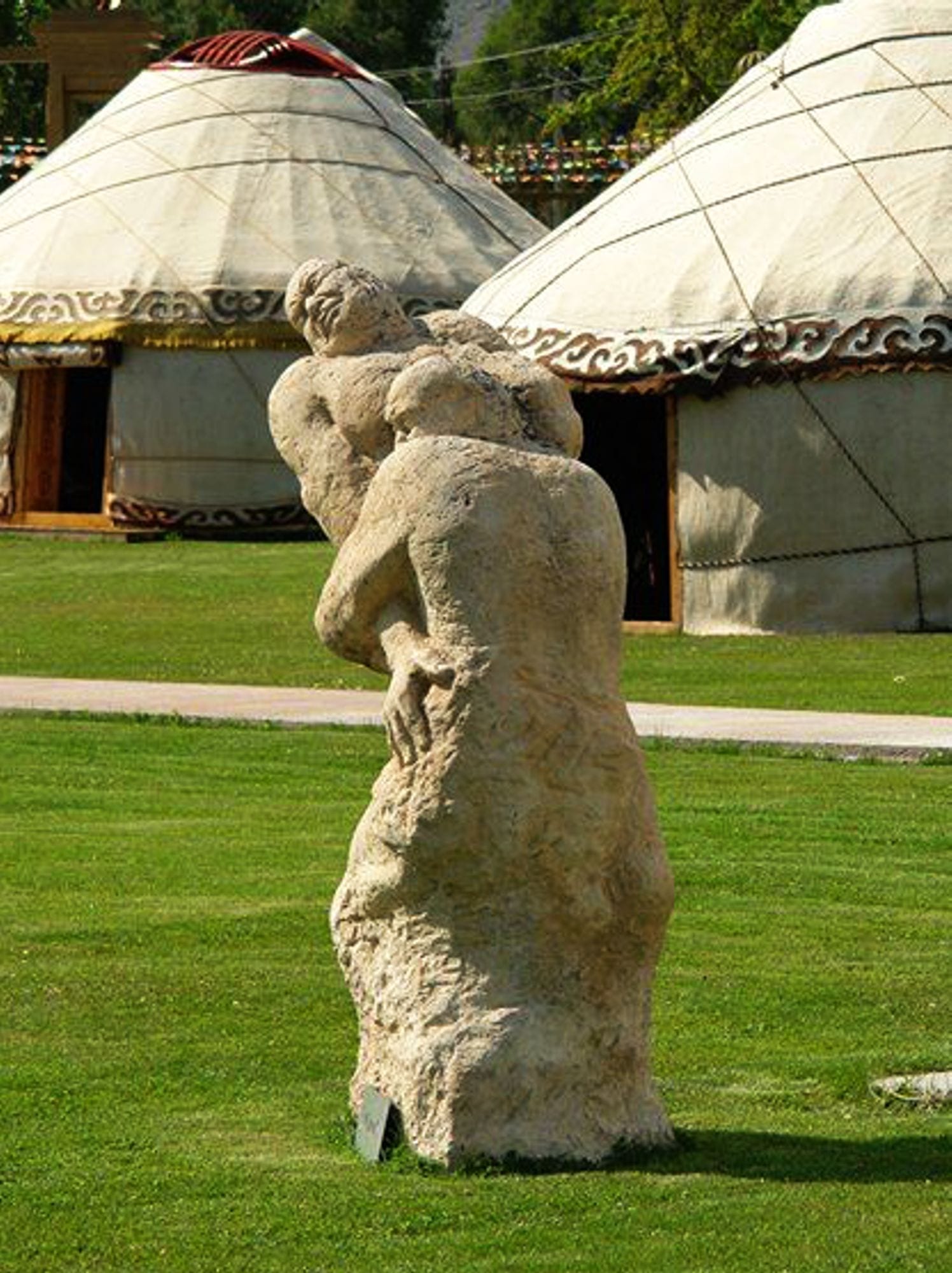
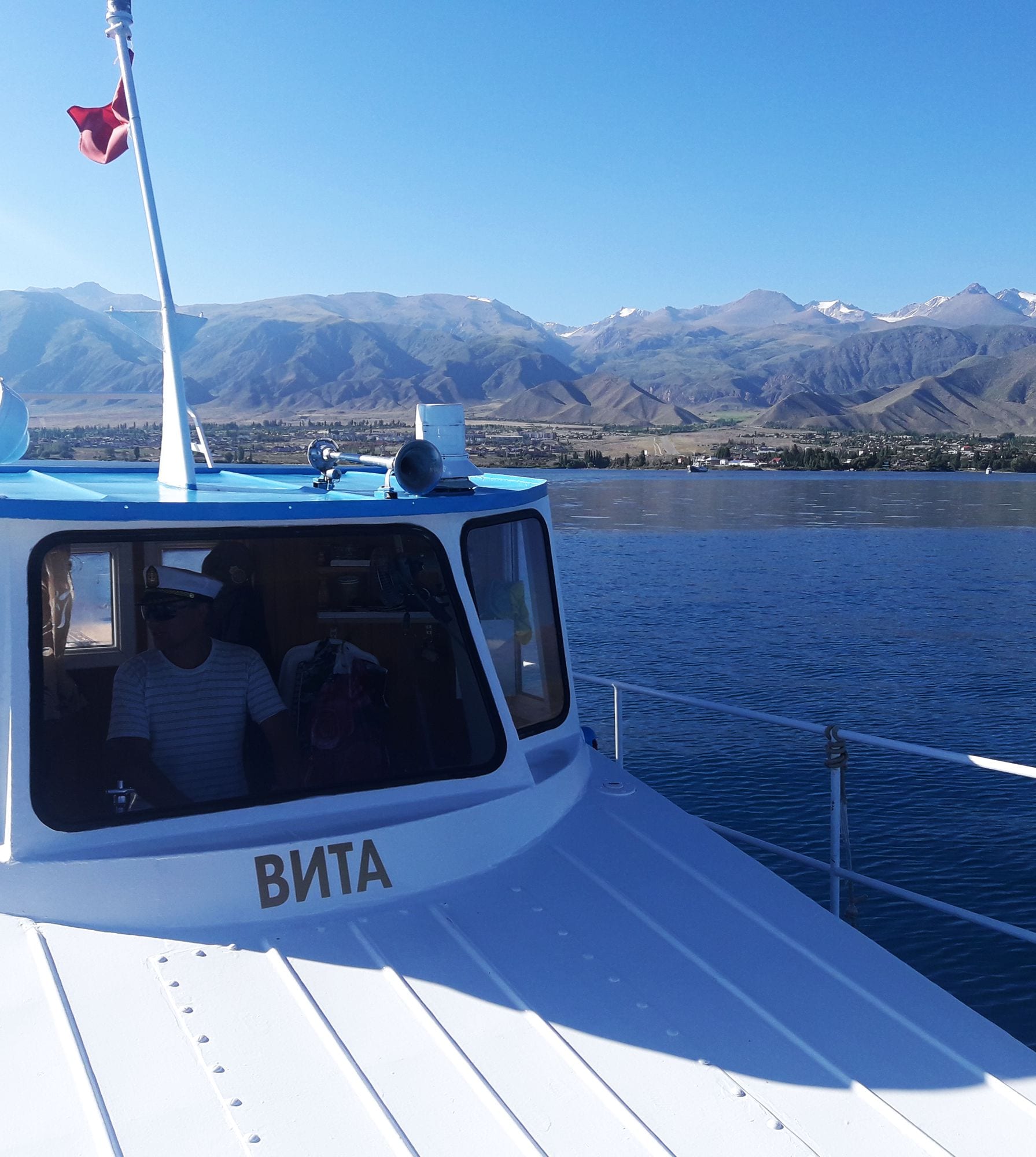
Issyk-Kul Boat Trip
During your visit of Cholpon Ata do not miss the good opportunity to discover Issyk-Kul Lake by joining one-hour boat trip. Issyk-Kul is the world’s second largest alpine lake, lying at 1609 m (5,279 feet) above sea level. Even though it is surrounded by mountains, Issyk-Kul never freezes, thus its name means “hot lake” in Kyrgyz.
Karkyra Valley
Rich pastures fill the immense, silent Karkyra (‘black crane’) Valley that straddles the Kyrgyzstan–Kazakhstan border. Attractions include the eponymous migratory birds that stop here in June and again from August to September, as well as a large stone monument known as San-Tash. As the story goes, en route to an invasion of China the conqueror Timur (Tamerlane) instructed his soldiers to each place one stone from Issyk-Kul into the mound. Upon returning victorious from the battle, each soldier again removed one stone; and by this device Timur estimated his battle losses.
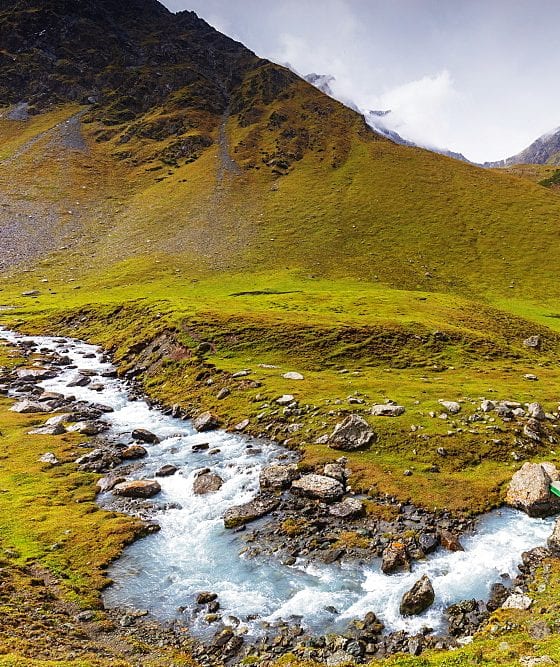
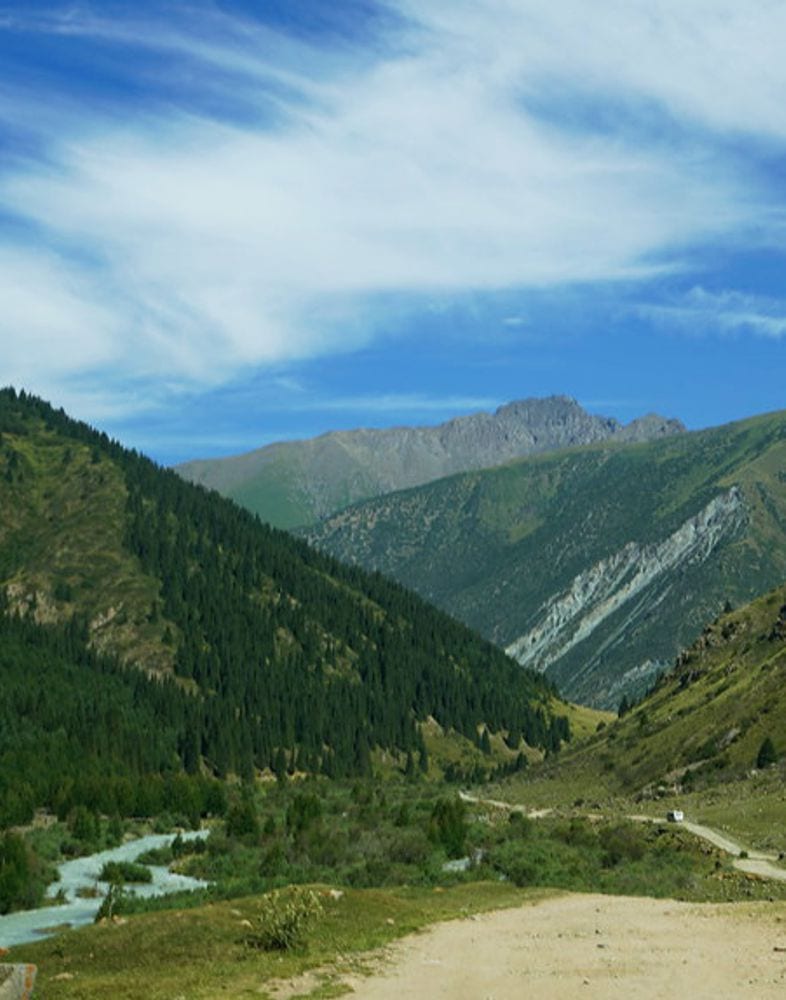
Kyrchyn Valley
A wide mountain pasture at the conflux of three valleys 15km north of Semenovka village, Kyrchyn jailoo (summer pasture) is an excellent base for day hikes or horse treks into the surrounding mountains. During the biennial World Nomad Games, the otherwise quiet pasture comes alive as a massive ethno-village of over one hundred yurts pops up here for a week to provide cultural attractions and touristic services to visitors.
Southern Shore of Issyk-Kul
There’s much dispute as to whether the Northern or Southern Shore of Issyk-Kul is the more scenic. Traditionally Western visitors have tended to err in favour of the quieter southern road, especially in summer when it is spared the heaviest tourist traffic en route to the Cholpan-Ata resorts. This is even though only relatively limited sections of the route have any real lake view – notably between Tamga and Tosor and between Km102 and Km95 (east of Ton). What isn’t up for debate, though, is that the southern shore is by far the better place to learn about local culture – eagle hunters, religious sites, yurt-building villages and
more await.
Barskoön
Barskoön is a useful starting point for southern Issyk-Kul’s best horse treks. The Barskoon valley has an impressive Barskoon waterfall. There are two interesting sights along the road - a Soviet lorry mounted on a plinth and a bust of Yuri Gagarin, who holidayed on the South shore of Issyk Kul after his historical first manned space flight. West is the village of Tamga, which is famous for a rock ("Tamga-Tash") with a Buddhist inscription dating from the 3rd to 8th centuries, which the locals interpreted as a Tamga.
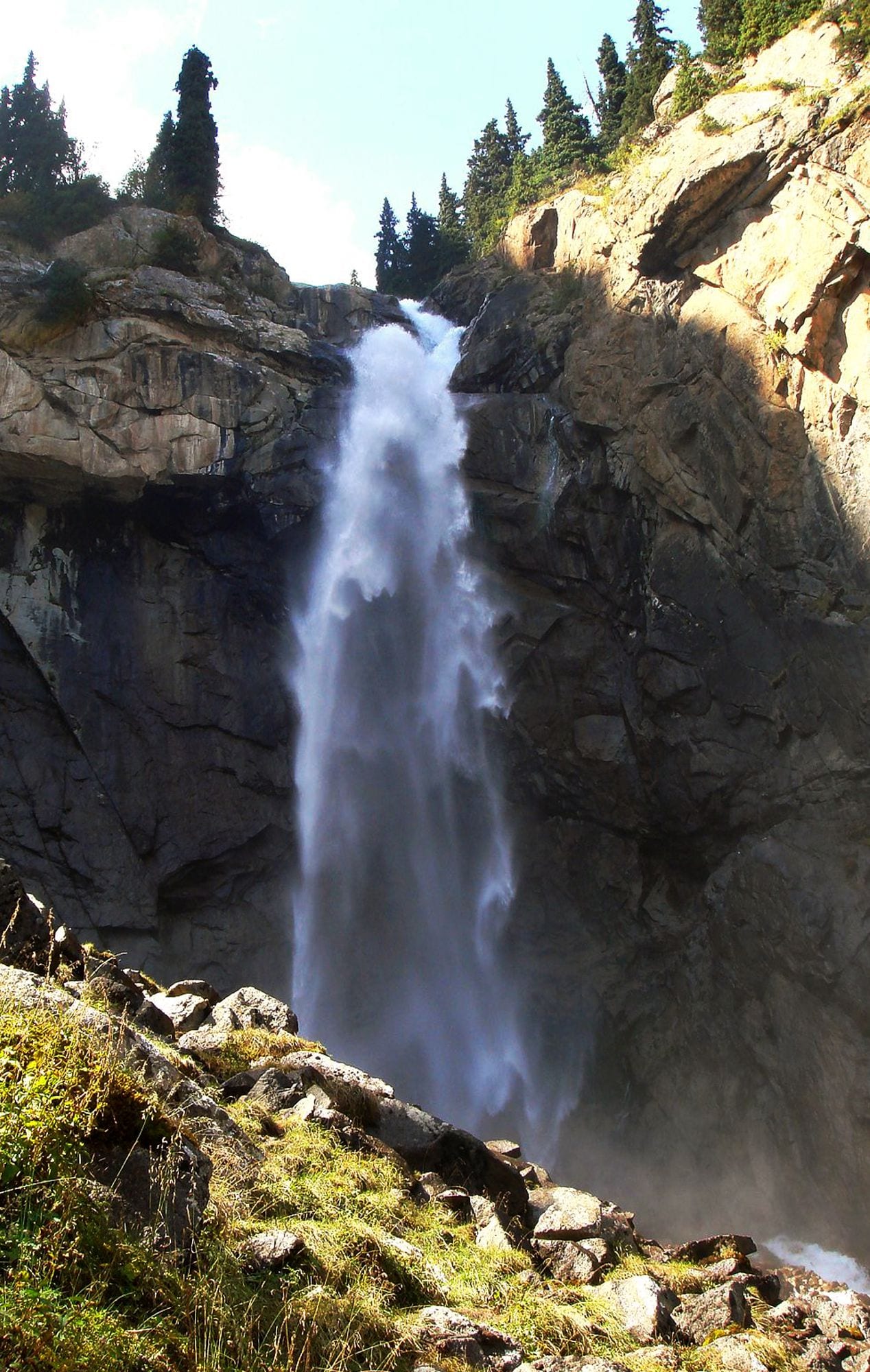
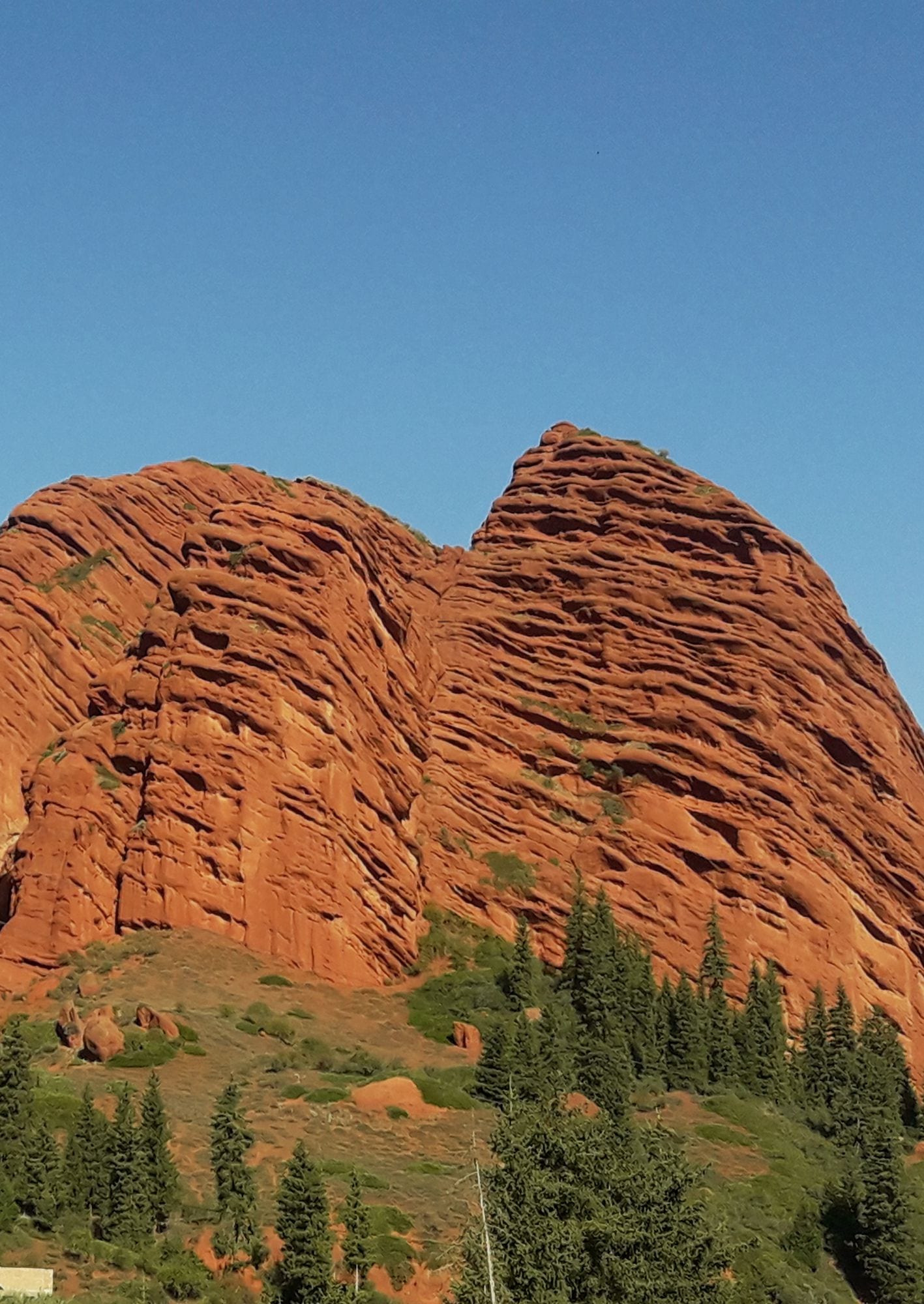
Jeti-Ögüz
Counterpointing striking red-rock bluffs, pine forests, upland jailoo meadows and a soaring Alpine backdrop, the Jeti-Ögüz area makes a good starting point for summer-only hikes, including taxing multiday treks to Altyn Arashan and Ala-Köl. For a quick, easy excursion, come and point your camera at the Seven Bulls for which the whole area is named.
Eagle Hunting
Central Asia is the birthplace of the ancient tradition of eagle hunting. The nomads who roamed the Central Asian steppes began to tame these birds of prey thousands of years ago and this tradition is still passed on from generation to generation. It was fundamental for the acquisition of food and furs in the harsh winter months. Falconry is often associated with hawks and falcons. The Kyrgyz hunters consider these birds to be for amateurs. Instead, they train golden eagles. They call this eagle the bird of God and prefer to hunt with them as they are the most intelligent, powerful and lethal hunters on the planet and can kill hares, foxes, lynxes and even wolves! You have opportunity to discover local hunting ways by attending private Eagle Hunting Show close to Bokonbaevo village.
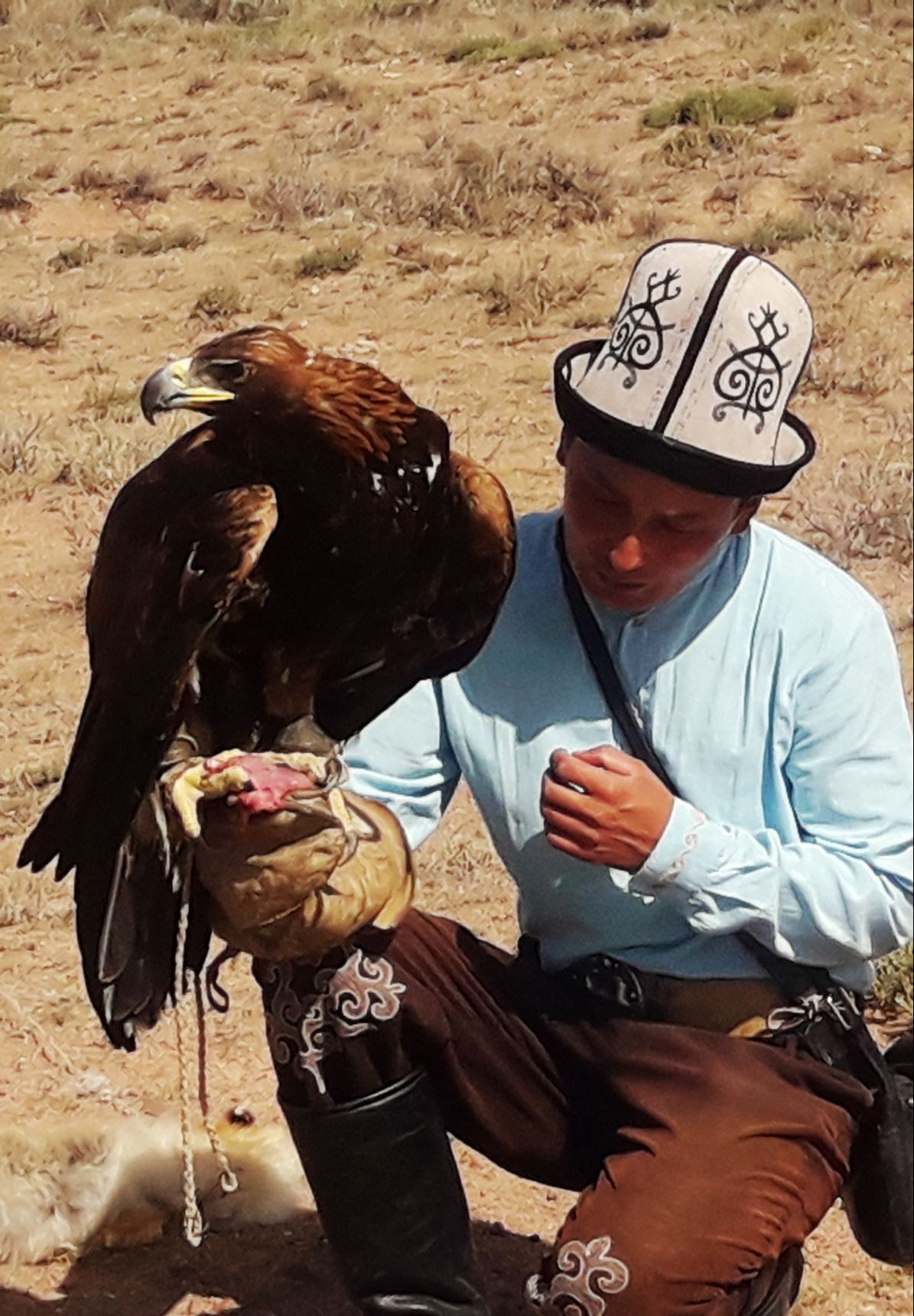
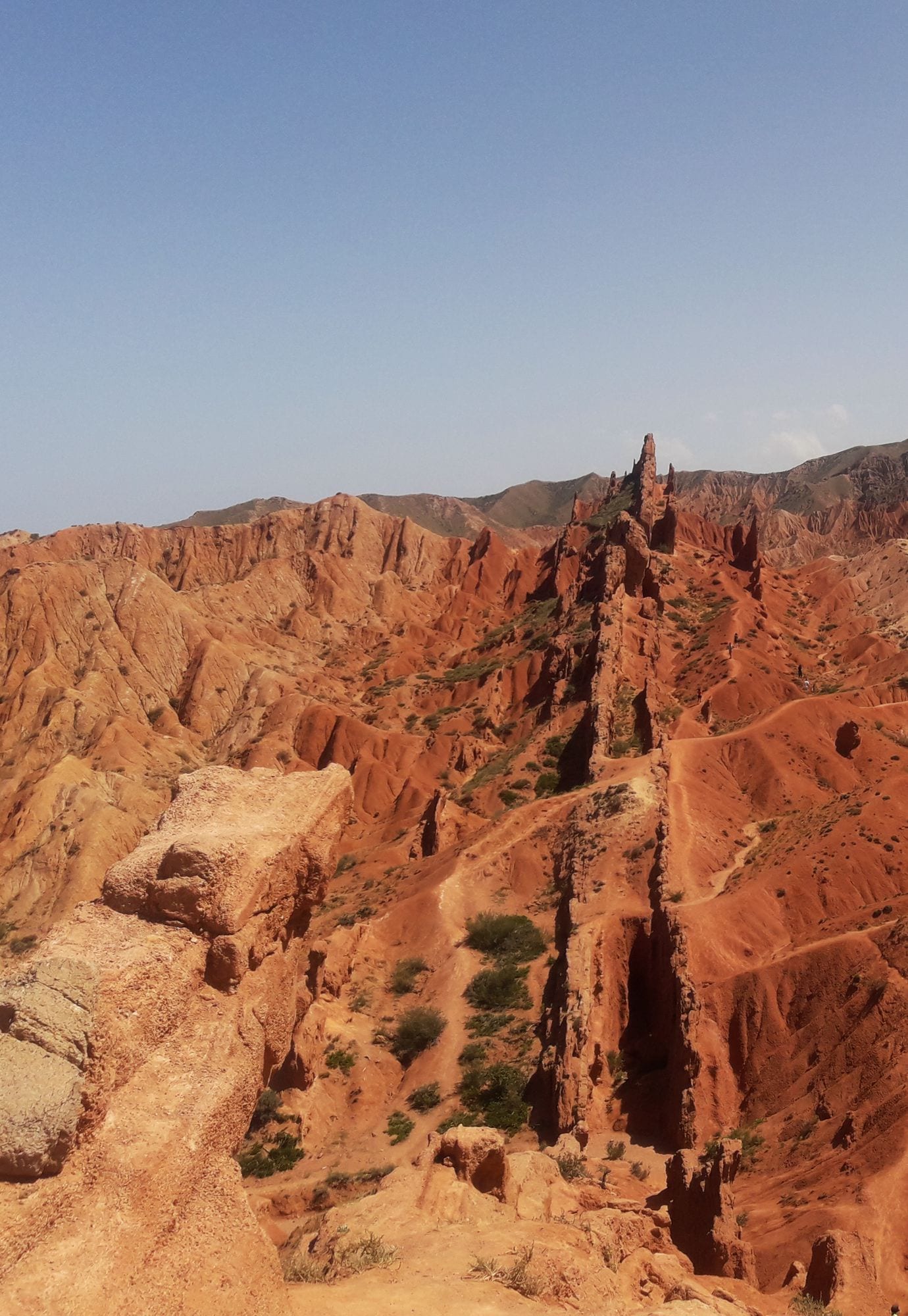
Skazka Canyon
The Skazka (Fairy Tale) canyon was named because of its bizarre rocky landscape, which for many years has been transformed by wind into amazing sculptures and formations. Some formations look like The Great Wall of China and you can also find other formations that look like snakes, dragons, sleeping giants and even whole castles. From here opens unusual view on a majestic panorama of lake and blue caps of mountains. It’s an excellent destination for children and adults alike and makes for an easy hike close to the lake.
Karakol
Karakol is one of Kyrgyzstan’s major tourist destinations, serving as a good starting point for the excellent hiking, trekking, skiing and mountaineering in the high central Tian Shan to the south and east.
Town is famous among skiers and snowboarders, the Karakol Ski Base provides services significantly better than those available at Shymbulak, a resort outside Almaty, and has cheaper prices.
Holy Trinity Cathedral
Set peacefully amid trees, this hefty wooden structure is topped with green-roofed towers and almost-golden onion domes. The 1872 stone original was destroyed by an 1890 earthquake. Built on the same foundations a new wooden version, finished in 1895, was turned into a club by the Bolsheviks who also removed its five onion domes in the 1930s. Serious reconstruction began in 1961, but church services only recommenced after 1991. Women need to wear a headscarf to enter.

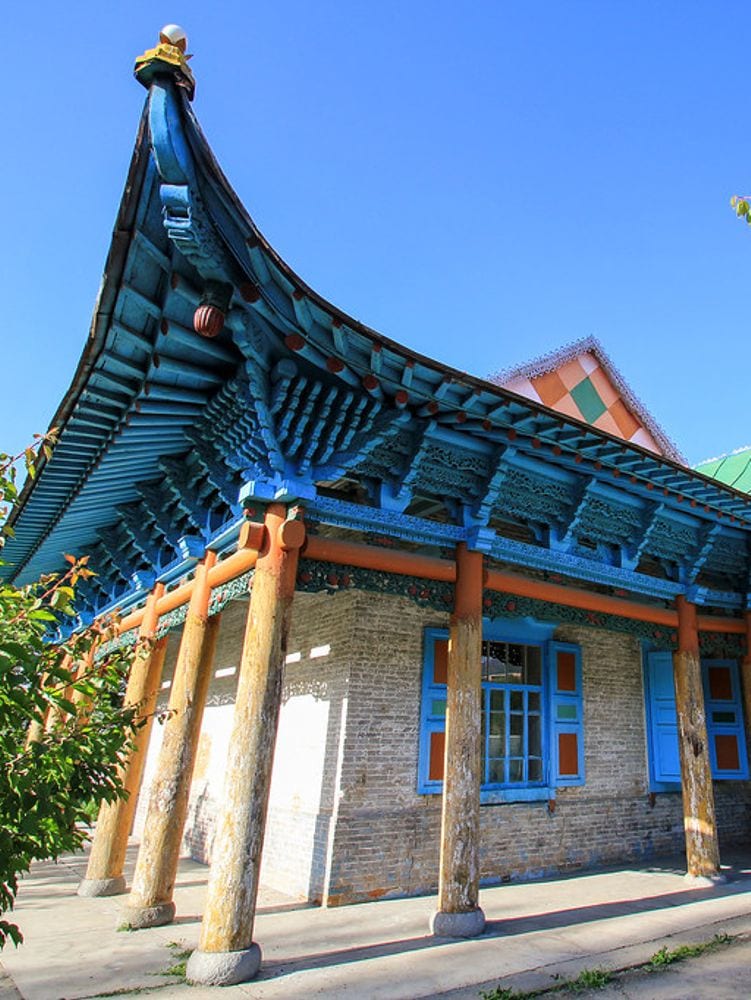
Dungan Mosque
A tip-tilted triple roof, carved-layered eaves and wooden exterior pillars give this colorful 1910 mosque the look of a Chinese Buddhist temple. Remarkably it survived the early Bolshevik era, which saw the town’s other eight mosques destroyed, though it was closed for worship between 1933 and 1943. Nowadays this mosque is operating for local visitors as well as for foreign travelers.
Altyn Arashan Valley
Probably the most popular destination from Karakol is the spartan hot-spring development of Altyn-Arashan (Golden Spa), set in a postcard-perfect alpine valley at 3000m, with 4260m Palatka Peak looming at its southern end. Much of the area is a botanical research area called the Arashan State Nature Reserve, which is home to snow leopards and a handful of bears, although the only animals you’re likely to see are the horses and sheep belonging to local families.
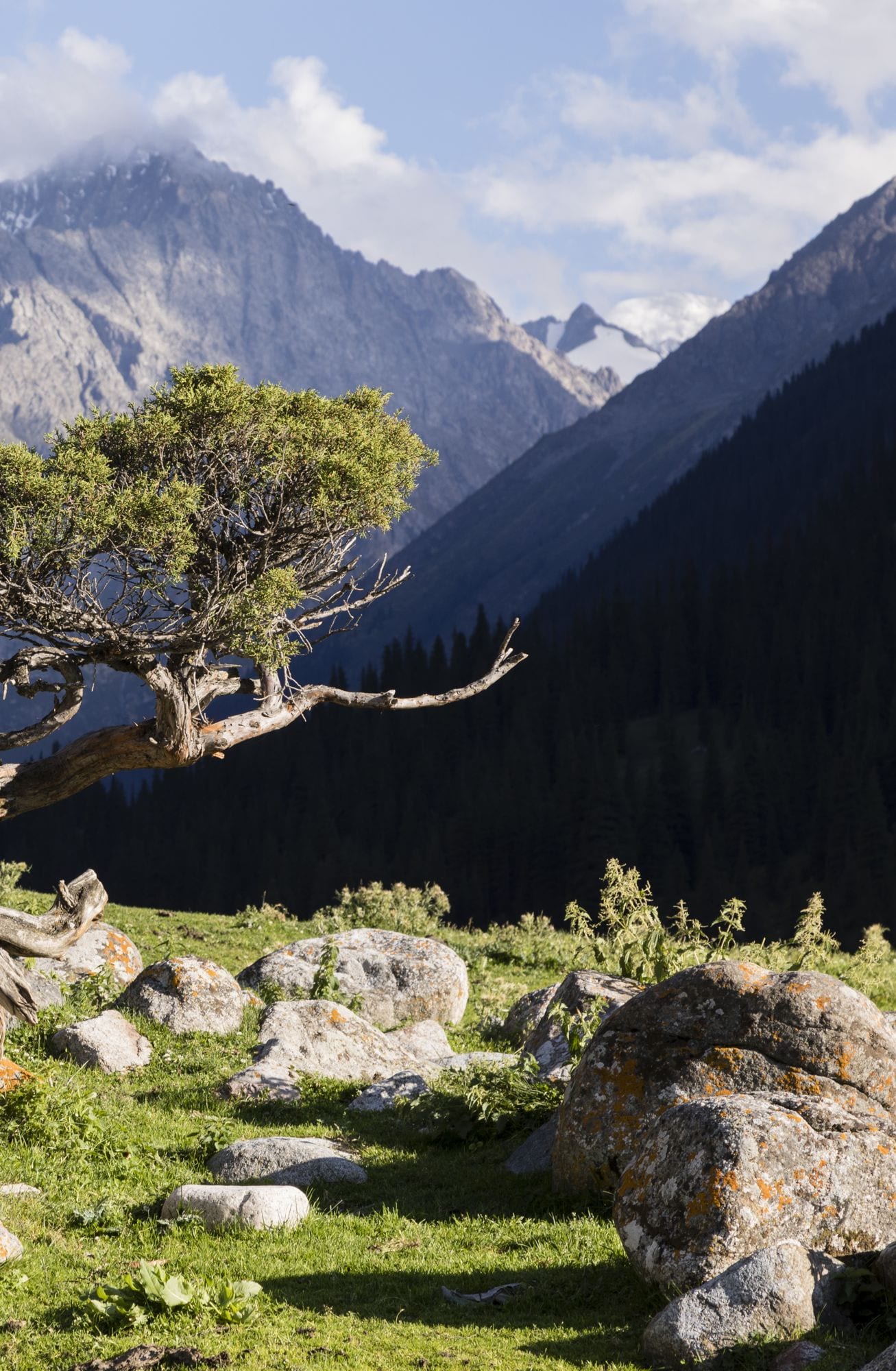
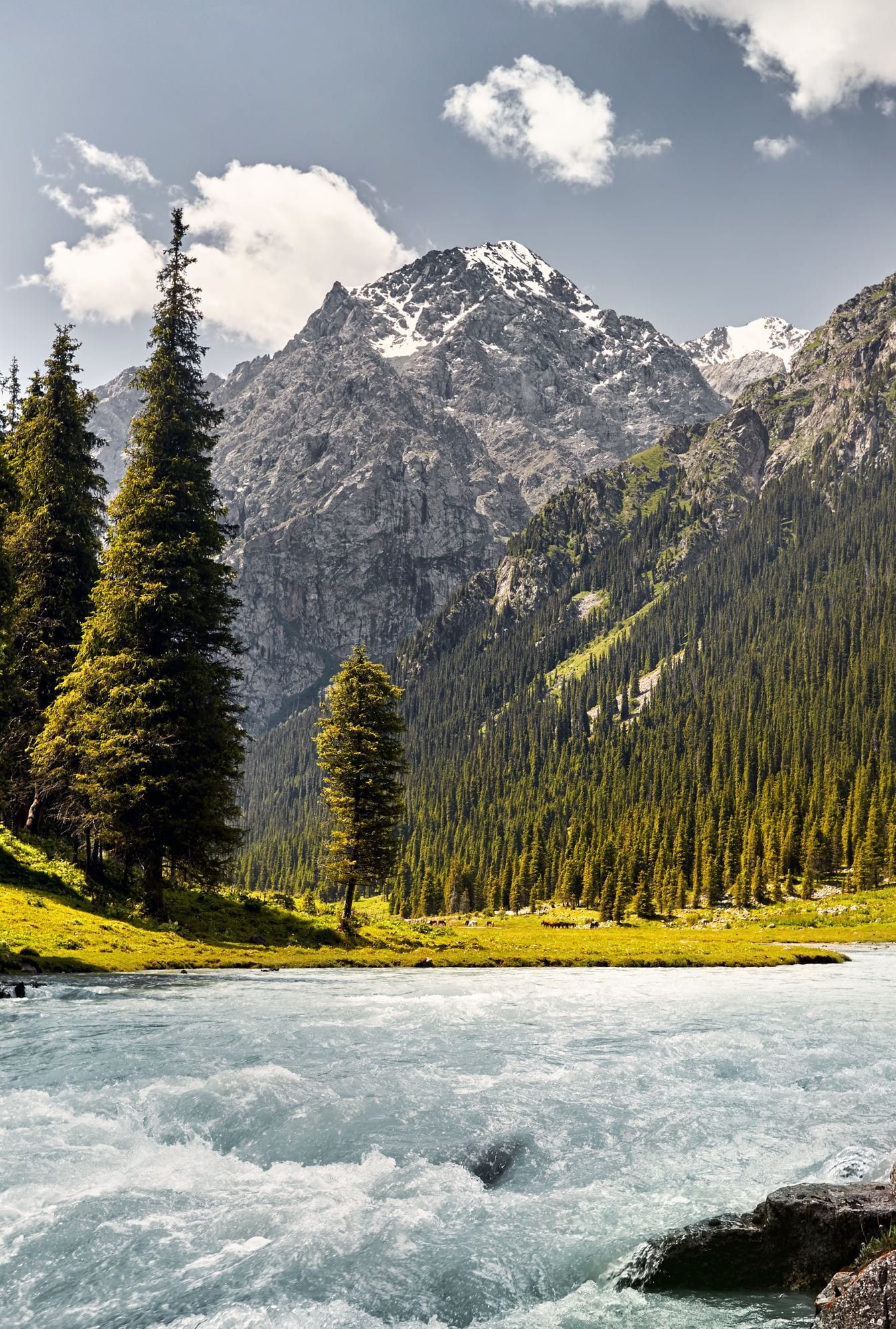
Karakol Valley
Due south of Karakol lies the beautiful Karakol Valley, a national park. The valley offers some fine hikes. Push in far enough, though, and there’s fantastic trekking or challenging climbing – and plenty of peaks left unconquered. Traditionally viewed as a summer playground, this area has become popular in recent years for winter sports as well. Karakol Ski Resort is without argument the best in the country.
Central Kyrgyzstan
The mountainous centre of Kyrgyzstan – Naryn District – offers travellers unrivalled opportunities to feel a trully nomadic experience – yurt stay; explore jailoos (summer pastures) on foot, horseback or by 4WD. The central gem around which the region’s tourism revolves is mesmerising Son-Kul Lake. It’s a very special place, but don’t overlook the crucial fact that the lake is frozen until late spring. Plenty of other options abound, from light day hikes near Naryn and Kochkor to long-distance hikes or horse treks to remote nature preserves and on to the south shore of Issyk-Kul. A real highlight – though access
is tough – is lake Kol-Suu in a remote valley just before the Chinese border.
Son-Kul Lake
Distantly ringed by a saw-toothed horizon of peaks, the wide open landscapes of Son-Kul create a giant stage for constant performances of symphonic cloudscapes. Almost 18km across and 29km wide, and fronted by lush summer pastures, the lake’s water color changes magically from tropical turquoise to brooding indigo in seconds as the sun flashes or the storms scud by in a vast meteorological theater. As a great help to stay here longer, the best Yurt Camp in the country now equipped here. Also, do not miss opportunity to observe night sky.

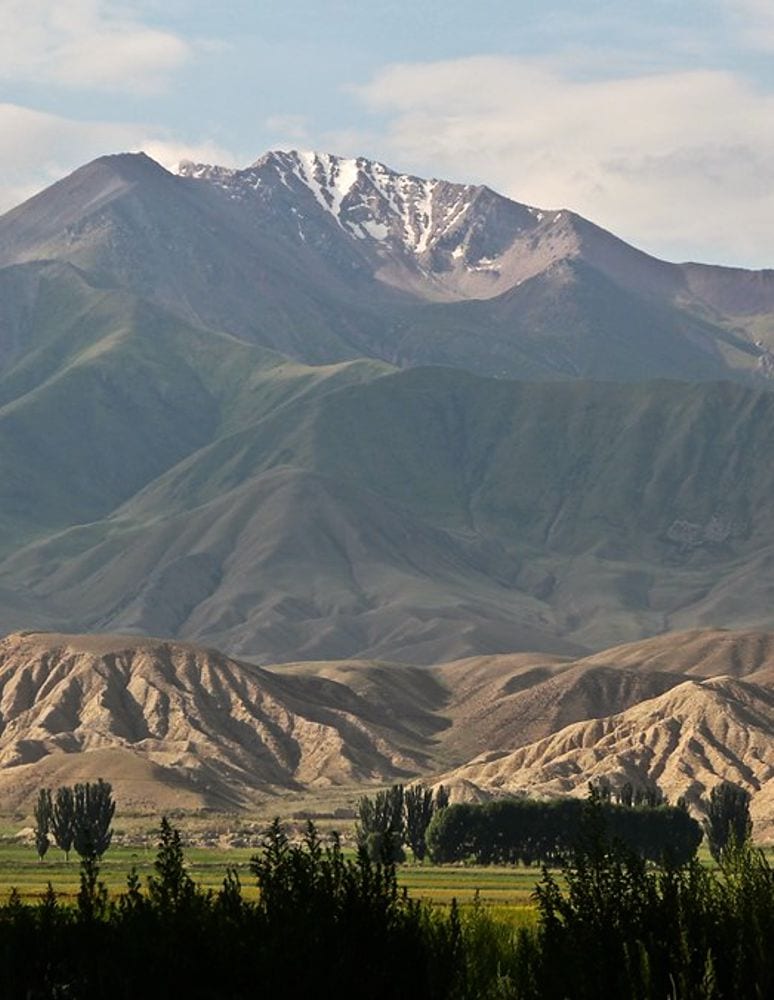
Kochkor Valley
Multiple competing community-tourism outfits make Kochkor an eminently practical base from which to visit Son-Köl and other Kyrgyz jailoos nearby. Do be aware that such activities are generally only practicable in summer and part of the shoulder season, as shepherds move their herds back to the villages during cooler months.
Osh & South Kyrgyzstan
Osh is the second largest city in Kyrgyzstan, located in the Fergana Valley in the south of the country and often referred to as the “capital of the south”. It is the oldest city in the country (estimated to be more than 3000 years old), and has served as the administrative center of Osh Region since 1939.
Osh is a lively place with the largest and most crowded outdoor market in Central Asia which was a major market along the Silk Road and is now named the Great Silk Road Bazar in reference to its historical importance.
Suleiman Too
This five-peaked rocky crag seems to loom above the Osh city wherever you go. Its slopes are indented with many a cave and crevice each reputed to have different curative or spiritual properties; many are detailed on photo-boards in the Cave Museum. One such is fertility mini-cave Ene-Beshik, its rocks worn smooth by young women slithering in to aid their motherly aspirations.

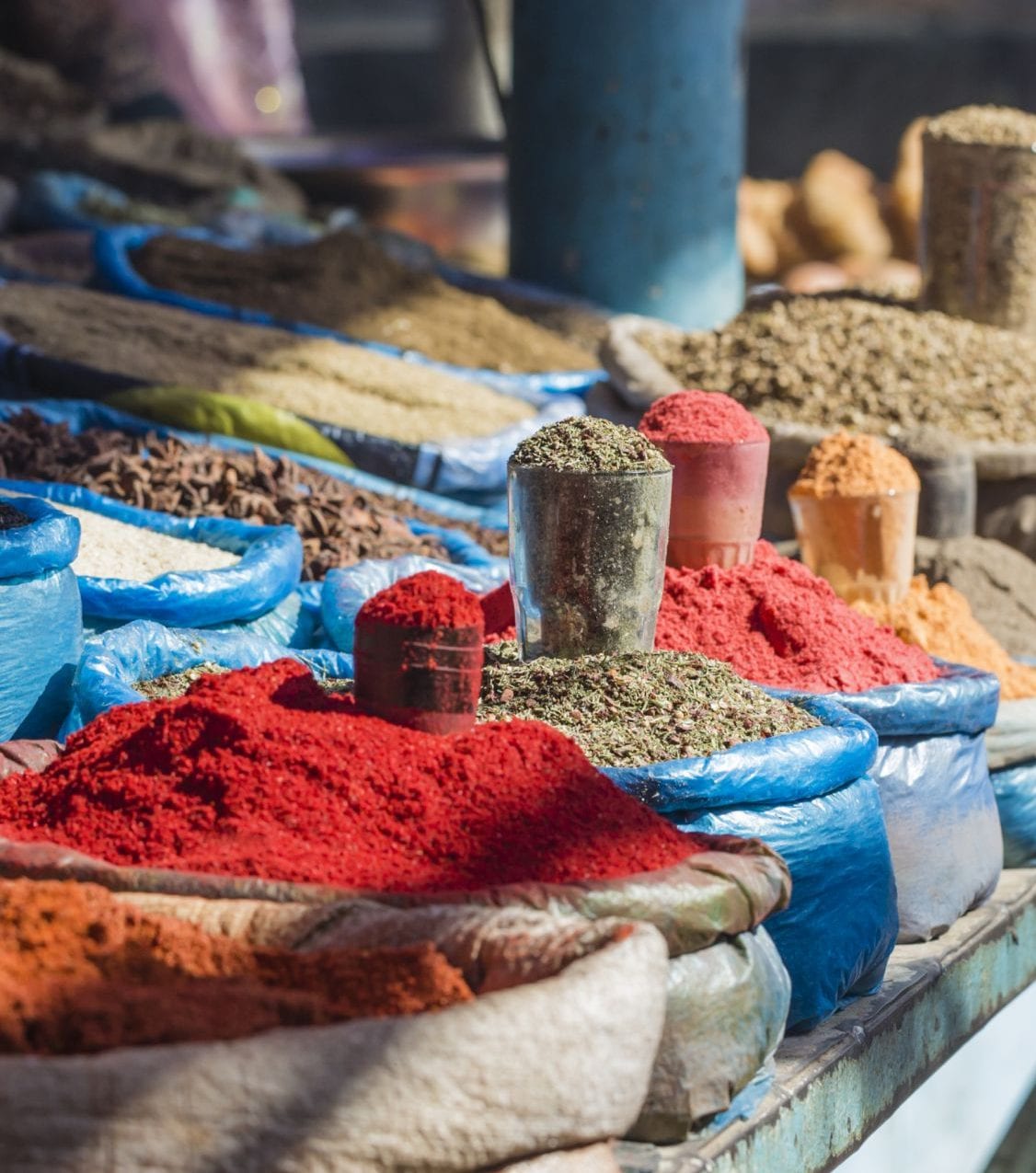
Jayma Bazaar
Osh Bazaar is one of Central Asia’s biggest markets dealing in everything from traditional hats and knives to seasonal fruit to horseshoes forged at the smithies in the bazaar. Many stalls are crafted from old container boxes and banal warehouse architecture, but there’s a fascinating bustle nonetheless, stretching for about 1km astride the river. Most dynamic on Sunday mornings; partly closed on Mondays.
Alay Valley
Platoons of vast, ever-snowy mountains march along the southern flank of the Alay Valley, whose considerable width (up to 30km) makes the scene especially memorable – at least when the clouds lift off the peaks that surround the valley. Visitors en route to China via Irkeshtam or to Tajikistan via Bordöbo get a taste of the scenery from Sary-Tash. However, it’s well worth continuing to Sary-Mogol and Daroot-Korgon for trailheads to gentle lake hikes, week-long traverses of the Alay range, or the expedition to the top of Peak Lenin.
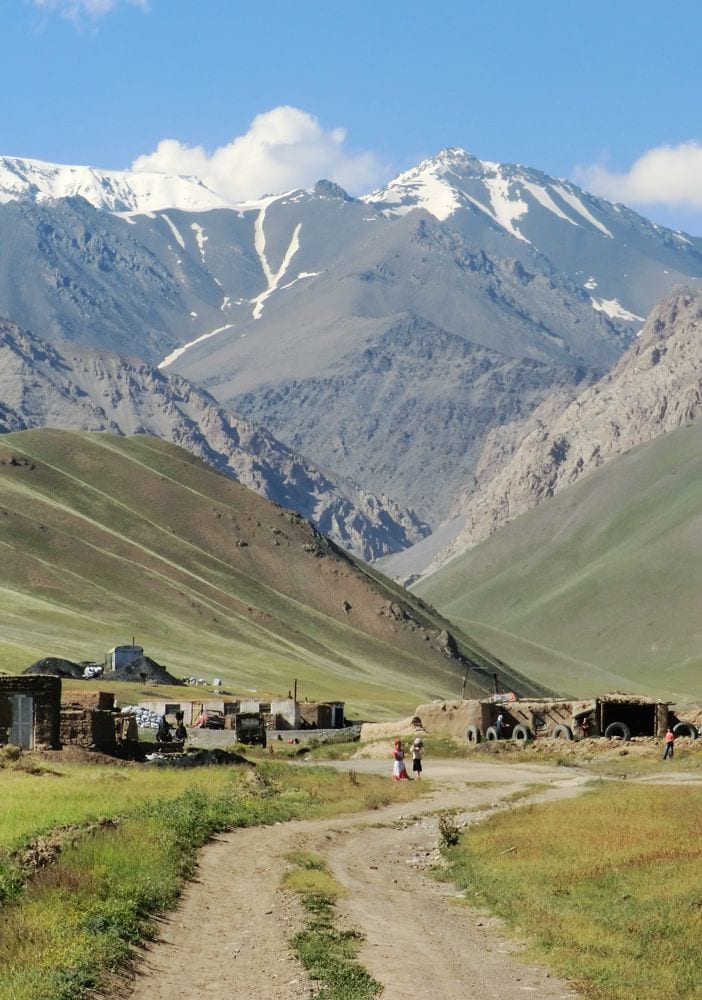
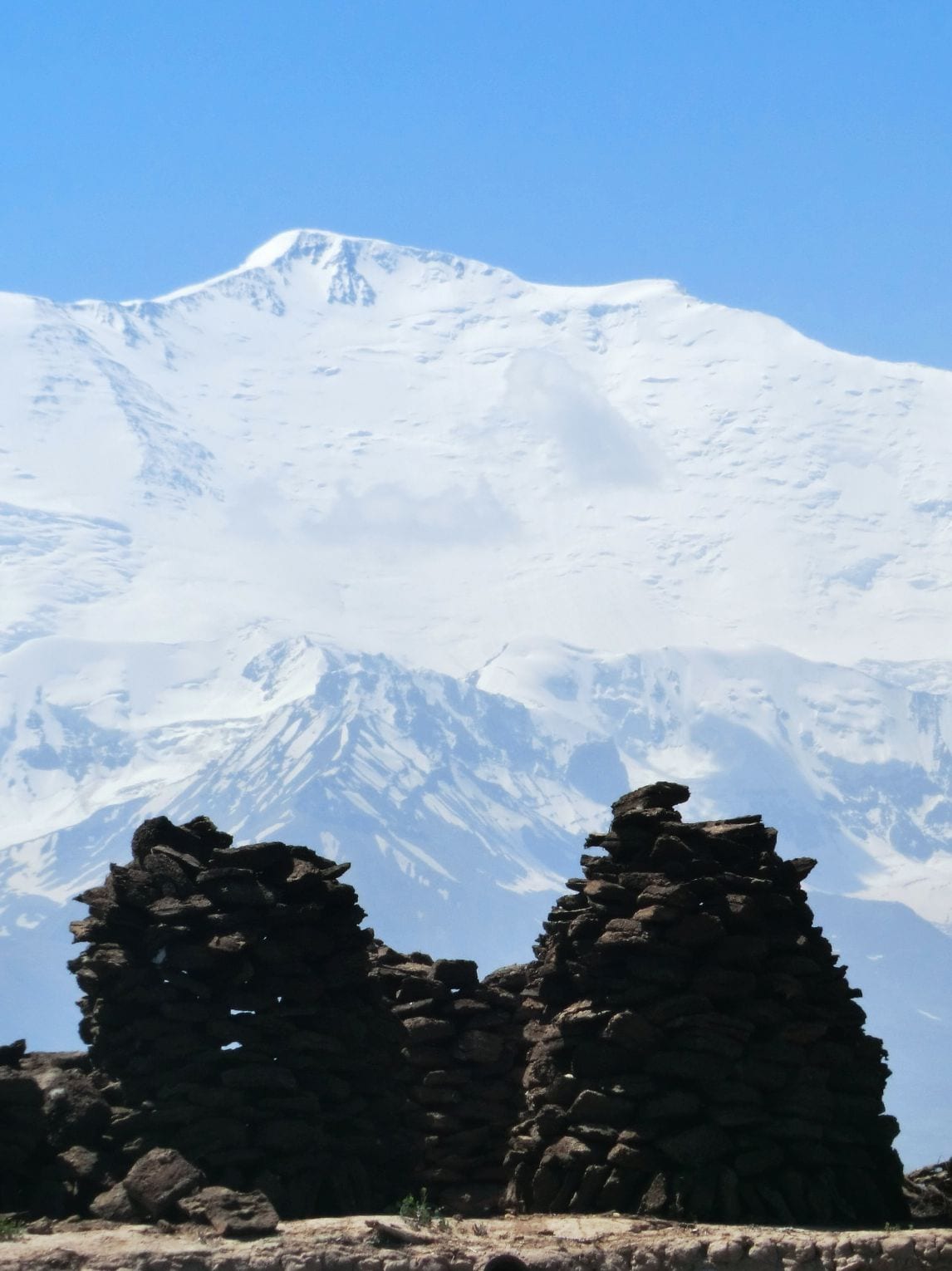
Peak Lenin
The highest summit of the Pamir Alay, 7134m Peak Lenin straddles the border between Kyrgyzstan and Tajikistan. For climbers, access is almost always from the Kyrgyz side where the lack of any peak fees and the unusually straightforward approach from Achik Tash make Peak Lenin one of the world’s most popular and accessible 7000ers. But although the snow-covered ridges and slopes are not technically difficult for most experienced mountaineers, the altitude and often changeable weather can be.
